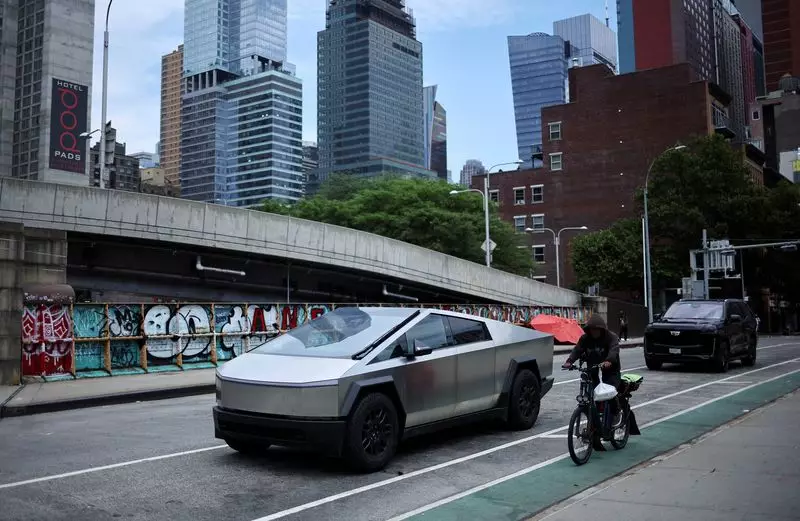Despite making a splash with its highly anticipated Cybertruck, Tesla’s recent performance metrics reveal a more sobering reality. The company managed to deliver only around 15,000 units in the fourth quarter and estimates suggest total annual deliveries were between 35,000 to 40,000. This figure starkly contrasts with the massive initial claims of 2 million orders. Such a disparity raises considerable concerns about the viability and future of the Cybertruck as an essential component of Tesla’s product lineup.
Bernstein analysts express skepticism regarding the Cybertruck’s profitability. They argue that the vehicle is not generating positive gross margins, which calls into question its potential success in a crowded automotive market. The analysts point to Tesla’s broadening price cuts and ongoing financing incentives, which are indicative of declining demand and profitability within the sector. Research indicates that excluding regulatory credits and one-time achievements related to software, Tesla’s auto gross margins may fall below 15%. This is an alarming statistic, placing the company behind its U.S. and European competitors, with only Ford appearing to fare equally poorly.
Strategic Oversights
According to analysts led by Toni Sacconaghi, the Cybertruck’s development—which spanned four years—has been characterized as a “massive strategic miscalculation.” This lengthy development period diverted critical resources and attention away from Tesla’s pressing need for a more affordable vehicle. As the electric vehicle market continues to evolve, Tesla may find itself increasingly under pressure to introduce lower-cost alternatives to remain competitive. Analysts emphasize that these strategic choices might result in significant opportunity costs for a company at the forefront of the EV revolution.
Tesla’s ambitious goals in the realm of autonomous driving are also under scrutiny. Bernstein’s team raises valid points regarding the company’s capacity to maintain an edge over well-funded competitors like Waymo. At the heart of their argument is the notion that Tesla’s sensor suite is less comprehensive than those of its rivals, which could hinder its ability to achieve the coveted Level 5 autonomy. Furthermore, the rapidly advancing field of artificial intelligence means that competitors can quickly catch up, diluting Tesla’s supposed advantages and making sustained profitability increasingly elusive.
On a brighter note, Tesla’s fourth-quarter deliveries did reveal a modest 2% growth year-over-year, totaling approximately 495,600 vehicles. However, this figure still fell short of analysts’ estimates, resulting in a slight dip in overall annual deliveries. Additionally, energy storage shipments showcased remarkable growth, soaring by 244% to 11 GWh, which may present an alternative revenue avenue.
The underwhelming performance of the Cybertruck and questions surrounding its profitability pose significant challenges for Tesla. Analysts critique the strategic decisions made during its development, suggesting it could overshadow the company’s broader objectives. Meanwhile, scrutiny regarding Tesla’s capacity to lead in autonomous vehicle technology underscores the need for vigilance in a rapidly evolving market. As Tesla navigates through these challenges, it will be crucial for the company to adjust its strategies to ensure long-term sustainability and competitiveness.

